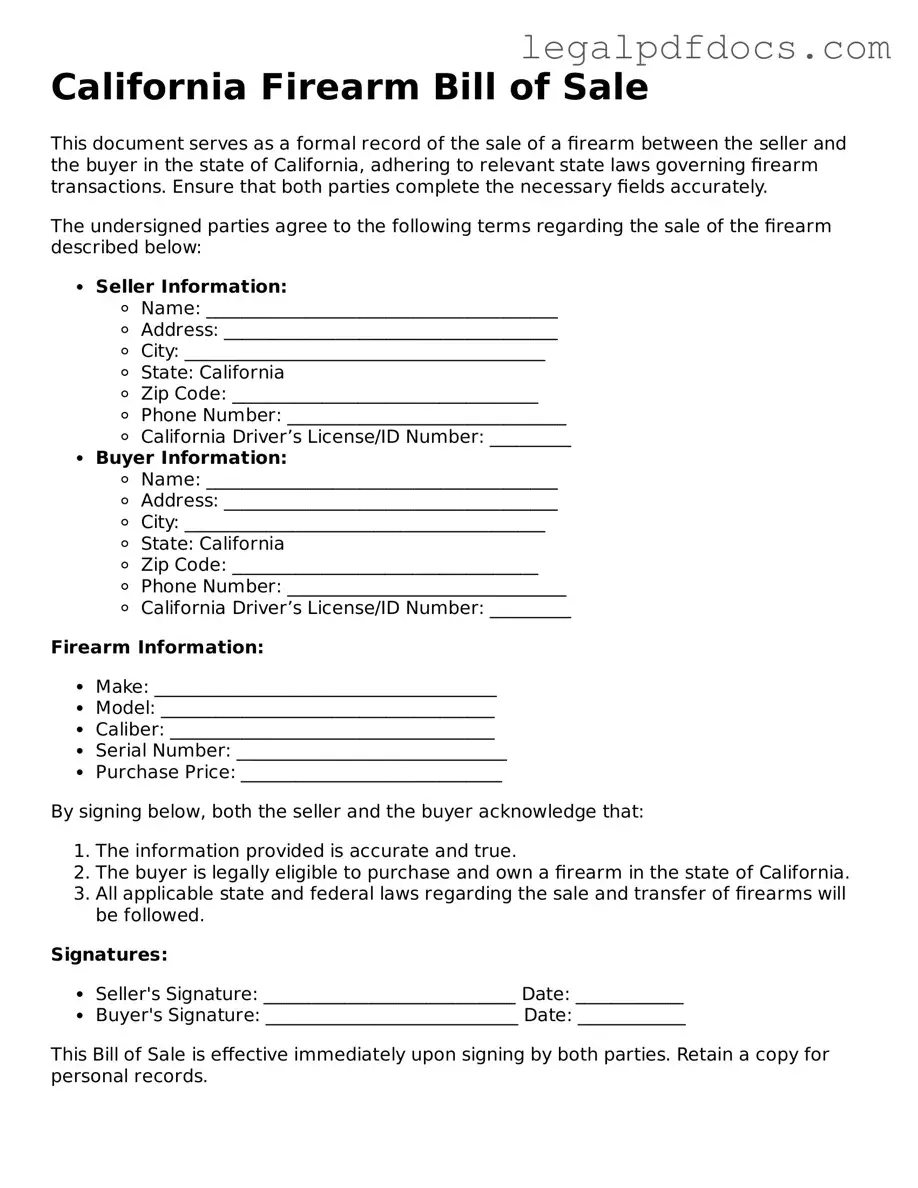Official Firearm Bill of Sale Form for California
The California Firearm Bill of Sale form is a legal document that records the sale or transfer of a firearm between individuals. This form ensures that both the buyer and seller have a clear understanding of the transaction, providing necessary details about the firearm and the parties involved. To complete your firearm sale legally, fill out the form by clicking the button below.
Open Firearm Bill of Sale Editor Here
